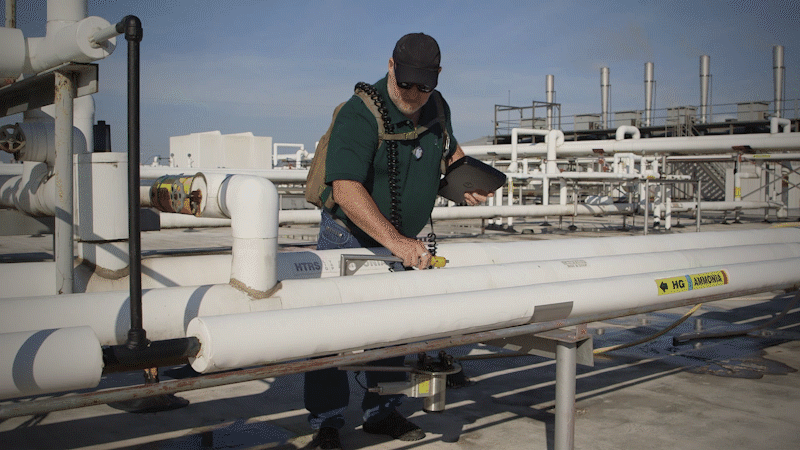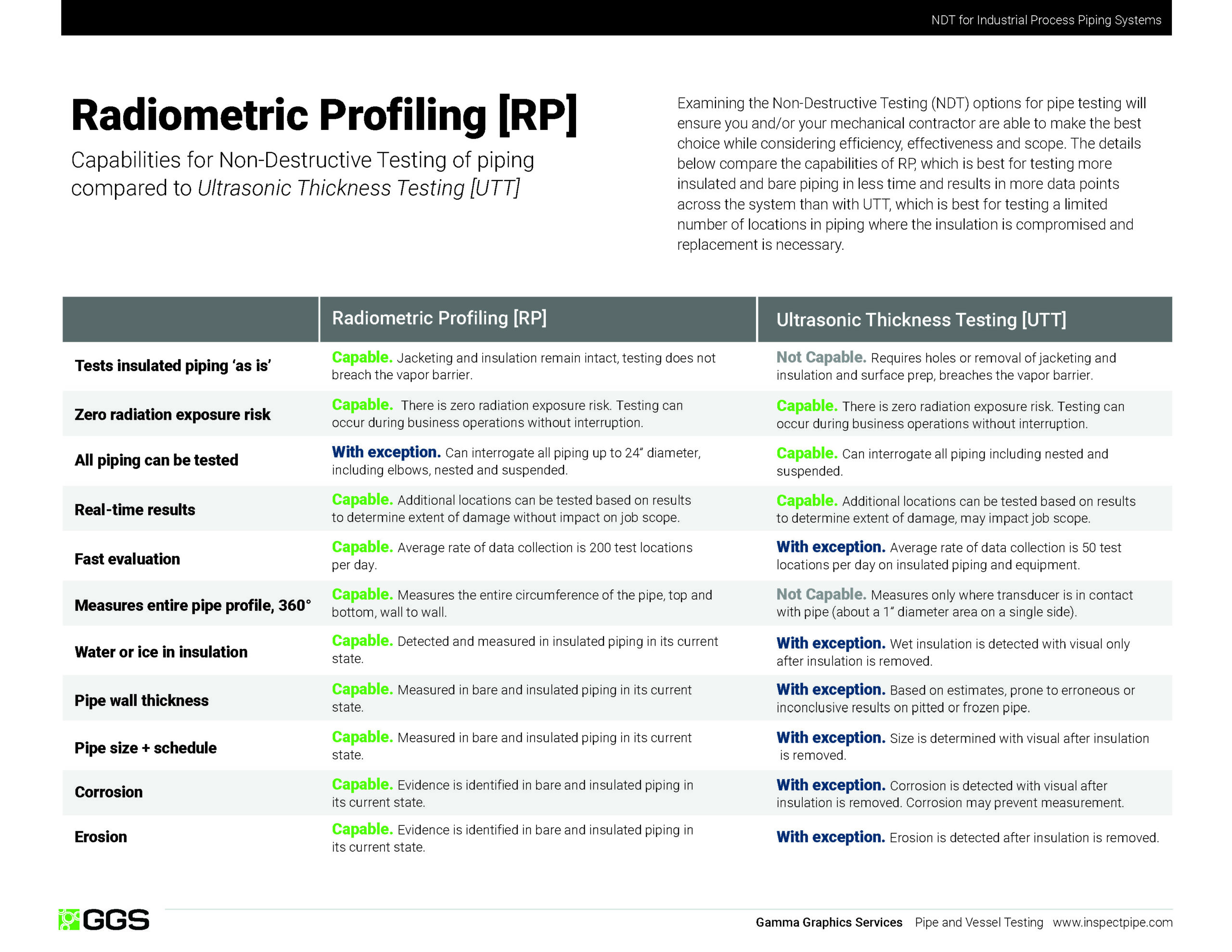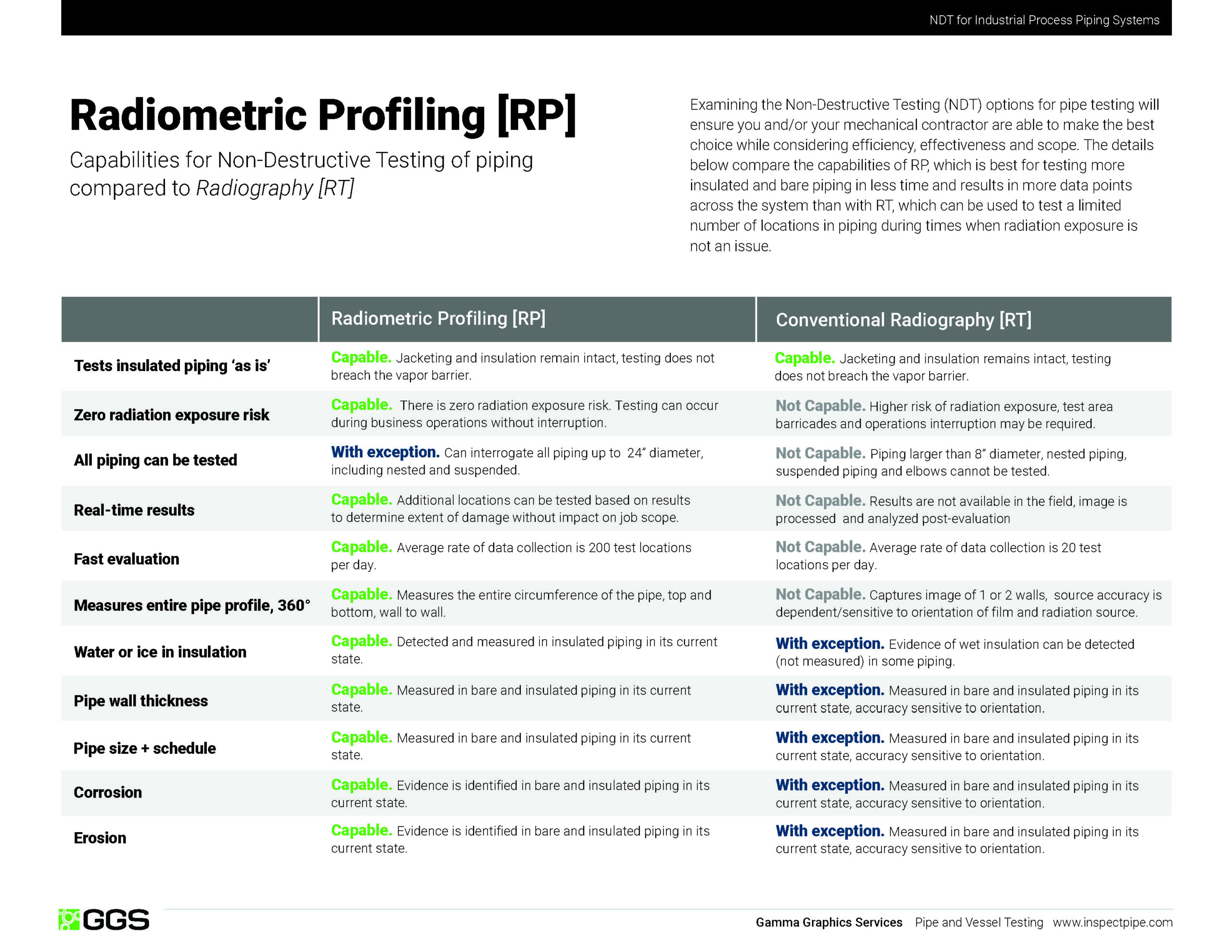Technology
Radiometric Profiling for Piping Ultrasonic Thickness for Vessels Compare Common NDT Methods
Radiometric Profiling
Rapid scanning NDT for evaluating the integrity of in-process piping.
Radiometric Profiling (RP)
The LIXI Profiler applies Radiometric Profiling (RP), the only NDT technology that detects and measures critical indications of the state of piping without touching a thing.
The versatile design and technology of the Lixi Profiler allows for readings on areas and environments that other non destructive testing methods are unable to achieve.
The radiation exposure from the gamma source is extremely low and is 100% safe for your facility staff. Special radiation safety barriers and direct vicinity evacuation are not required for its use.
Characteristics of RP
- There is no risk of radiation with RP, it is 100% safe to resume operations while testing.
- No insulation removal or surface prep is required with RP; it is capable of testing the integrity of insulation and piping in their current in-process state.
- Can measure water or ice in insulation, pipe corrosion, wall thickness, pipe size and schedule.
- RP can evaluate all piping – nested, suspended and elbows.
- Can measure up to 24” diameter pipe (including insulation and jacketing).
- Measures the entire circumference of the pipe, top and bottom, wall to wall.
- Technicians can scan 150+/- test locations per day with RP.
- RP is real-time. While analysis of collected data is performed post-testing, cues revealed during scanning can prompt the assessment of additional nearby locations to determine extent of condition or more insight.
Limitations
- Single pipe wall must be less than 0.900”.
- Cannot measure piping greater than 24” diameter (including insulation and jacketing).
RP works for you.
Radiometric Profiling (RP) is a fast, real-time testing technique. This application measures changes in a beam of gamma-ray energy as it passes through the sample being tested. The beam source is positioned on one side of the pipe with the detector on the other side of the pipe, measuring everything between the source and detector for a 360° profile of the pipe. This includes insulation, foreign material inside the insulation, pipe wall, pipe contents, degradation such as corrosion or erosion and anything else ‘in the beam’.
The operating technician uses these two types of common scans as well as others to quickly locate indications of pipe defects, abnormalities or hidden pipe components.

A Slice Scan is perpendicular, it reads across the axis of the pipe.

An Axial Scan is parallel, it reads along the centerline of the pipe.
Radiometric Profiling
is efficient.
Profiler scans are quick and cursory information is revealed in real-time. When problems are found, additional adjacent testing to determine the extent of damage can be performed without impact on job scope.
Radiometric Profiling tests piping and components in their current state – no insulation removal or surface prep necessary.
The Profiler is assembled, calibrated and ready to use in minutes.
An average of 150 locations is tested in a system per day.
Radiometric Profiling
is thorough.
All piping in your system that needs to be tested will be. Unlike other technologies, RP is nimble and able to test long runs, vertical piping, congested/nested piping, suspended piping and elbows.
RP is not bound by accessibility or single wall / single side limitations that are present with other NDT methods.
The Profiler has proven to be an excellent tool for detecting CUI, erosion, thinning pipe wall, welds, blockages, changes in schedule, moisture in insulation, liquid levels in piping, and verifying if gate valves are fully open and more.
Radiometric Profiling
is safe.
Radiometric Profiling is safe for you staff and your system.
RP presents no radiation exposure or safety risk; testing can occur during normal hours of operation with plant and facility staff present with no radiation barriers required.
RP scans piping as is, it does not require holes to be cut in jacketing or insulation. The current state of your piping is preserved. Vapor and thermal barriers are not compromised.
Doing some research?
If have you experience with or have been recommended another non destructive testing technology for your piping, Radiometric Profiling (RP) may be a better alternative.
These quick guides compare the important characteristics of common NDT methods so that you can make the best choice while considering efficiency, effectiveness and scope.
PROS + CONS
Compare Common NDT Methods

